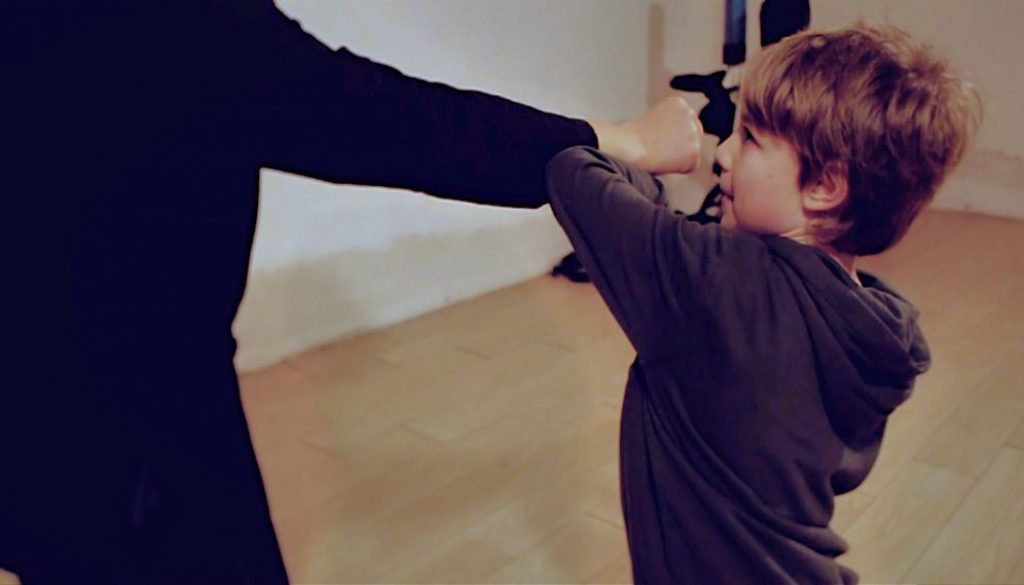Trapping
What is trapping in martial arts and what is it for?
Trapping is a type of interaction widely used in Wing Chun (under the name Phon Sao) and in Bruce Lee’s Jeet Kune Do:
- It consists of “capturing” the adversary through a tactical mobilization of our limbs (not necessarily grabbing him with our hands)
- It is not only a defensive or evasive action, it can also indeed foreshadow or include attack and counterattack
- It allows to block, to divert, to unbalance, to move, to dampen, to block, to strike, to put in lever (etc., read also A free home study Chin Na course for beginners)
- Although it could suggest only a play of arms, it can also include the legs and the rest of the body
The basics of trapping in 6 Dragons Kung Fu
The necessary skills
Outside a collaborative training context, trapping is not easy at all, we need:
- Spatial intelligence (read The most important skill in combat)
- Speed and explosive power (read Speed and quickness)
- Tactile sensitivity (see 6 Dragons Kung Fu’s reactive dummy demo)
- A good muscular memory (read The muscle memory)
- Timing
- Precision
- A good structure and balance (read also Kung Fu rooting: the pyramid concept)
- Deception capability
- Adaptability (read 6DKF’s interactions: from the strong blow to the light touch)
- Knowledge of the body dynamics
- …
As anyone can understand, a beginner cannot manage such requirements, only after long training, it is possible to start to see the first few results.
Trapping goals samples
Outside a self-defense context (read Personal defense: the S.A.F.E. method), in combat, the core goal is obviously to prevail but to be more specific, trapping can lead us to:
- Temporarily immobilize the opponent (not necessarily causing him damage)
- Reach a position favorable to execute a technique (eg. a Chin Na)
- Create / exploit an opening to hit a focal target (eliminating any barrier)
- Intercept the opponent’s action
- Unbalance the opponent
- Avoid being hit (even counterattacking)
- Gain space / time to act
- Bring the opponent to the ground (read also The 3 phases of a throw)
- …
Trapping interactions samples
in 6 Dragons Kung Fu, we look at the human body as a set of weapons. When we talk about trapping there are no limits in relation to the elements that we can implement.
For example (beyond the normal interactions related to striking) we can use:
- Hands / fingers – To grab, push, channel (etc.)
- Forearms / elbows – To divert, control, capture, transfer inertia (etc.)
- Shoulders / back – To unbalance, move, block (etc.)
- Feet – To anchor, slide, hinder (etc.)
- Knees – To deviate, push, capture (etc.)
- …
The “weapon” that we instinctively choose to use must always be the one that, in the context of a specific fight scenario, responds best to the need for:
- Speed
- Economy of effort
- Effectiveness
The trapping distances
Trapping exists when there is contact. The first thing to understand is that there are basically 2 distances (read also Ideal distance from the opponent during a fight) that we must learn to manage:
- Short distance – When we are closer, our guard shrinks to protect our body; in this case the trapping contact does not provide grabbing as a first action, we should prefer to deviate and control through the forearms (grasping only in a second time, when we are surer of not being exposed to the opposing action)
- Middle distance – When we are at a middle (or long) distance our guard widen and one of our arms try to catch the adversary limbs; as it happens for Wing Chun (through Man Sao, “searching hand”), in 6 Dragons Kung Fu we use a similar method of catching the opponent’s action (read ), the extended arm is bent at 90-120°, ready to hit and grab
A note by Master Kongling – In both cases, there is always a hand (similar to the Wing Chun’s Wu Sao), a leg, a knee and an elbow ready to protect / defend: genitals, chin, liver, ribs, jaw…
In the next articles of this series, we will see how to develop trapping attitude (the exercises) and the basic techniques.
In-depth video courses
- Hand grip strength conditioning – Learn how to improve the capability to firmly hold the opponent
In-depth articles
- How to acquire the Soft Touch skill – This is one of the best ways to approach the opponent’s action
- Introduction to the idea of Precision Control – The skill that connects all the other ones
Questions
Reply in the comments and share your experience:
- In light of the above, how would you define (in your own words) trapping?
Author: Master Kongling
Founder of 6 Dragons Kung Fu.How to master 6 Dragons Kung Fu?
Are you searching for:
- Daily training exercises?
- Synthetic theory and concepts?
- A step by step path from white to black belt?
- A path (clear, consequential and gradual) designed to build real martial skills?
- A direct contact with Master Kongling?
Go to our Patreon page and choose a training plan: starting from the Practitioner level, you will gain access to all this and much more.
Inside each Premium Lesson, you will receive the same teaching (practices, tips, concepts, small secrets and corrections) reserved to the live students of Master Kongling.
Important - Once a certain number of registrations are reached, no other participants can be accepted. For more information write to: [email protected].










May 1, 2020 @ 12:53 am
The interaction with the opponent
May 8, 2020 @ 8:18 am
😉
June 6, 2022 @ 12:07 am
This is a very lucid definition of trapping, it is useful but not necessarily crucial.